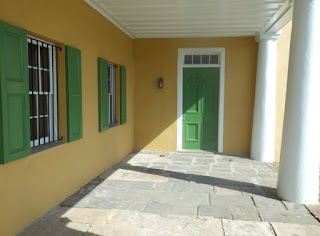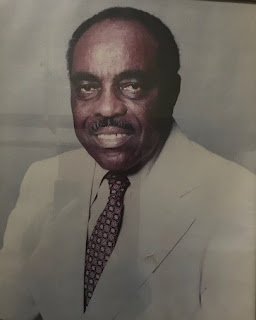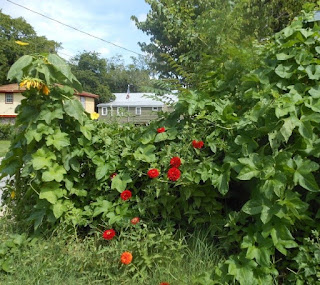Eastside History Series: 2 Amherst St.- The Belser House (also known as Presqu'le)
by Dr. Susan Millar Williams
We know that this handsome Adam-style house was built between 1802 and 1808 by someone whose last name was Belser, but it’s not clear whether his first name was Jacob or Christopher. It has come to be known as the Christopher Belser House, and also as Presqu’ile, a French word that means peninsula. It may have been designed by Gabriel Manigault, but again, no one is positive.
We know that this handsome Adam-style house was built between 1802 and 1808 by someone whose last name was Belser, but it’s not clear whether his first name was Jacob or Christopher. It has come to be known as the Christopher Belser House, and also as Presqu’ile, a French word that means peninsula. It may have been designed by Gabriel Manigault, but again, no one is positive.
 |
| Archibald Grimke |
Another of Henry and Nancy’s sons, Francis James Grimké, became a Presbyterian minister and helped found the NAACP. The third son, John, moved to Florida and cut off ties with his family.
 |
| Sarah and Angelina Grimke |
As far as I can tell, Archibald, Francis, and John never actually lived in this house, since Henry moved his family to the country after he started having children with Nancy Weston. However, Henry’s association with Presqu’ile gives the Eastside neighborhood a link to some of Charleston’s most renowned nineteenth-century authors and activists, and to a famous twenty-first century novelist. Sue Monk Kidd’s 2014 novel The Invention of Wings explores the inner lives of Sarah and Angelina and a slave girl, Hetty, who was given to Sarah on her eleventh birthday.
The Belser house was damaged in the earthquake of 1886. A photograph by George Cook shows the stucco fallen from one of the gables, exposing the brick underneath.
 |
| The Belser House in 1958 Historic American Buildings Survey, Library of Congress |
 |
| Spiral Staircase seen from above Historic Buildings Survey, Library of Congress |





Comments
Post a Comment